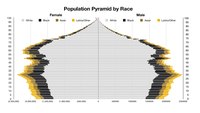
Photo from wikipedia
Presentation at academic conferences is an important marker of research productivity. However, not all accepted abstracts progress to full publication, and there is anecdotal evidence suggesting an imbalance in sex… Click to show full abstract
Presentation at academic conferences is an important marker of research productivity. However, not all accepted abstracts progress to full publication, and there is anecdotal evidence suggesting an imbalance in sex and ethnicity amongst presenters. There is a lack of data evaluating the outcome of prize presentation sessions at academic surgical conferences in the UK. This study aimed to analyse the outcomes and demographics from presentations at prize sessions at two prestigious UK surgical conferences. This retrospective observational study compared data on all Moynihan (Association of Surgeons of Great Britain and Ireland) and Patey (Surgical Research Society) prize presentations from 2000 to 2020. The primary outcome was rate of publication. Secondary outcomes included demographic differences in sex and ethnicity, publication according to prize outcome, academic affiliation, time to publication, and journal impact factor. Some 442 accepted abstracts were identified over the 21-year period, with 71.0% from the Moynihan sessions and 79.3% from the Patey sessions leading to full publications, with a median time to publication of 448 days (IQR 179–859) in journals with relatively high impact factors (median 5.00; IQR 3.15–6.36). Of the 442 prize presenters, 85 (19.2%) were female. The majority of the presenters were White males (211, 47.7%), followed by Asian males (112, 25.3%). However, there was a continuously increasing overall trend of female presenters from 2000 to 2020 (P = 0.019). Publication rates from the two prize sessions were high, with presenters publishing in journals with high impact factors. There, however, was a disparity in sex and ethnicity amongst presenters.
Journal Title: World Journal of Surgery
Year Published: 2021
Link to full text (if available)
Share on Social Media: Sign Up to like & get
recommendations!